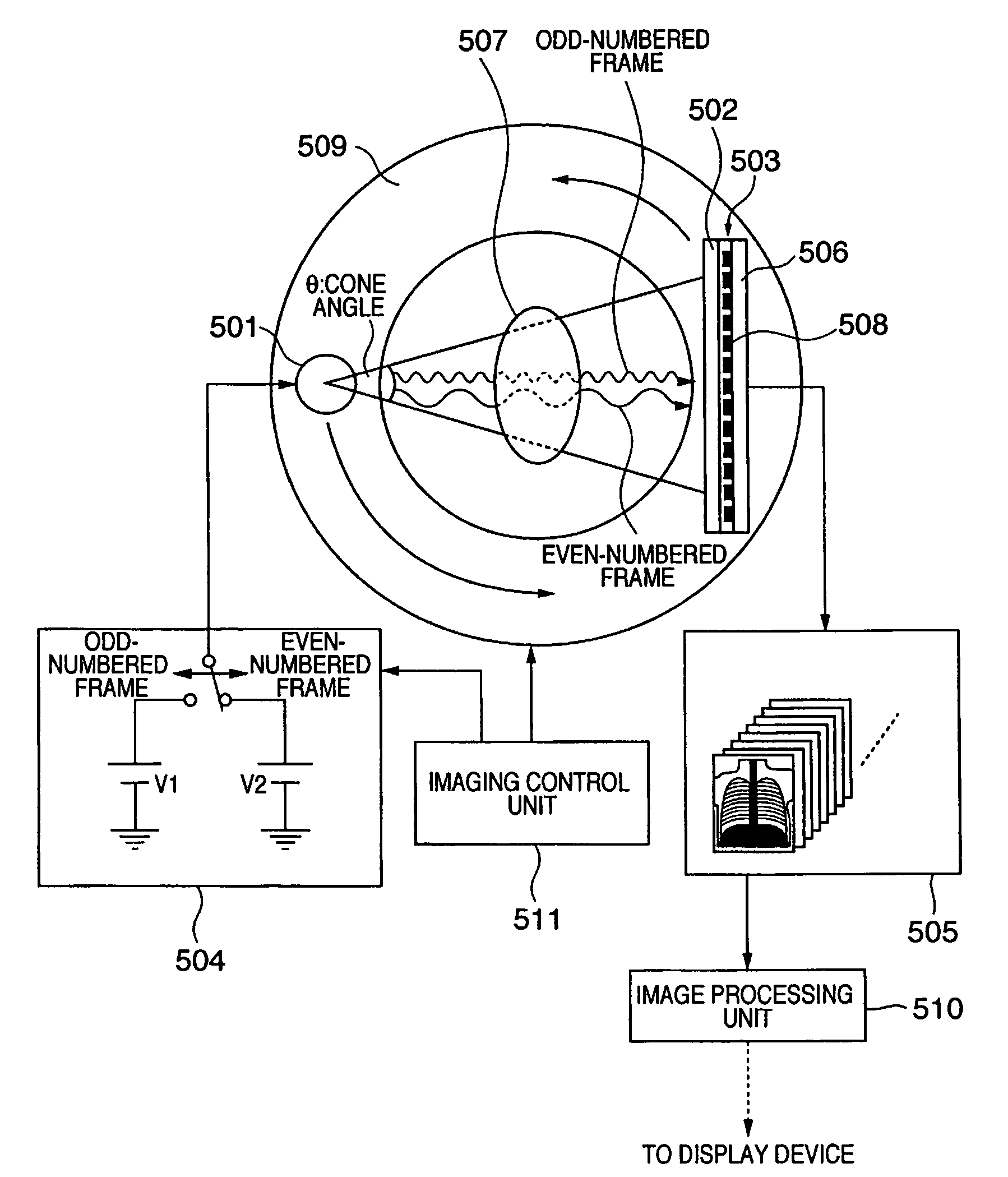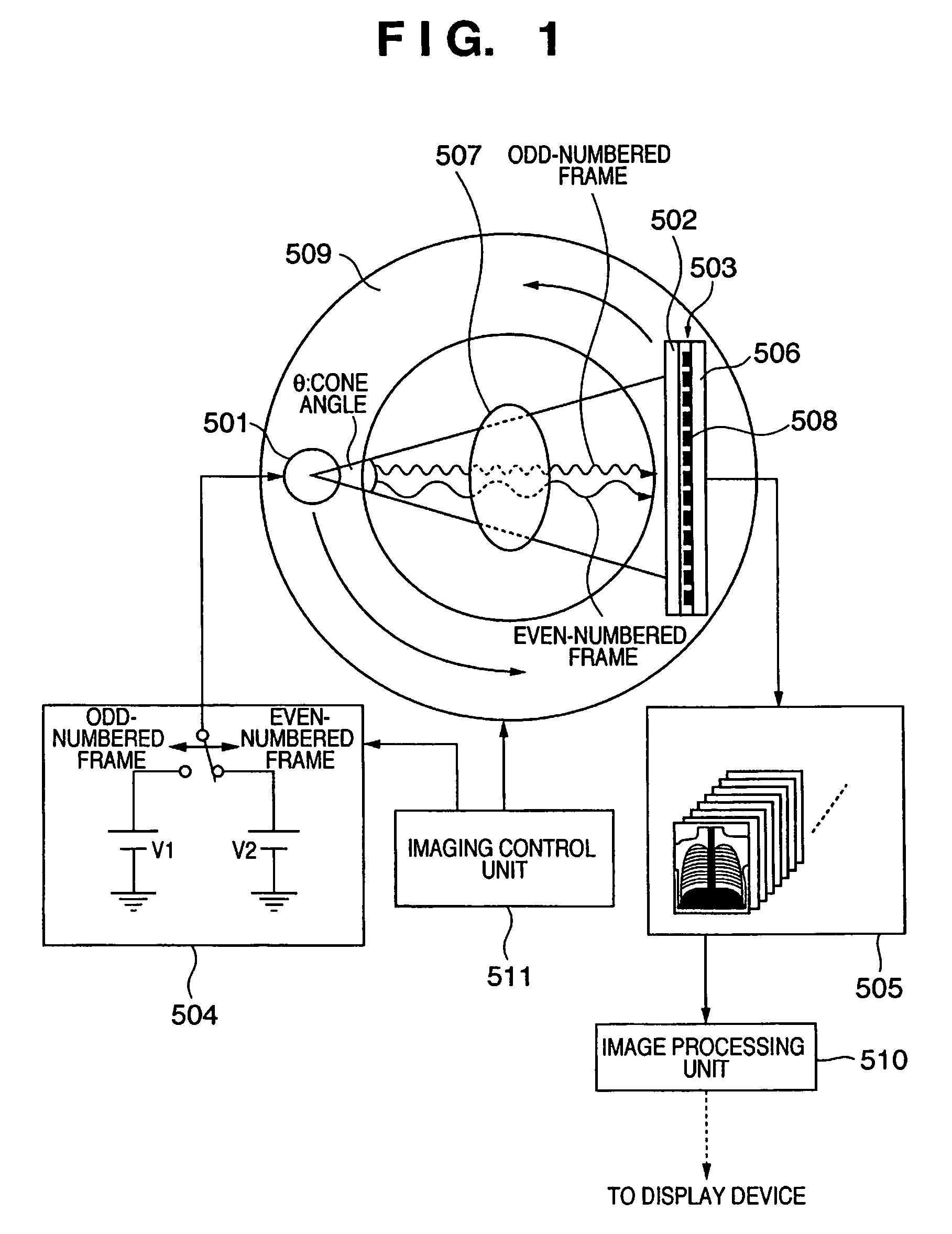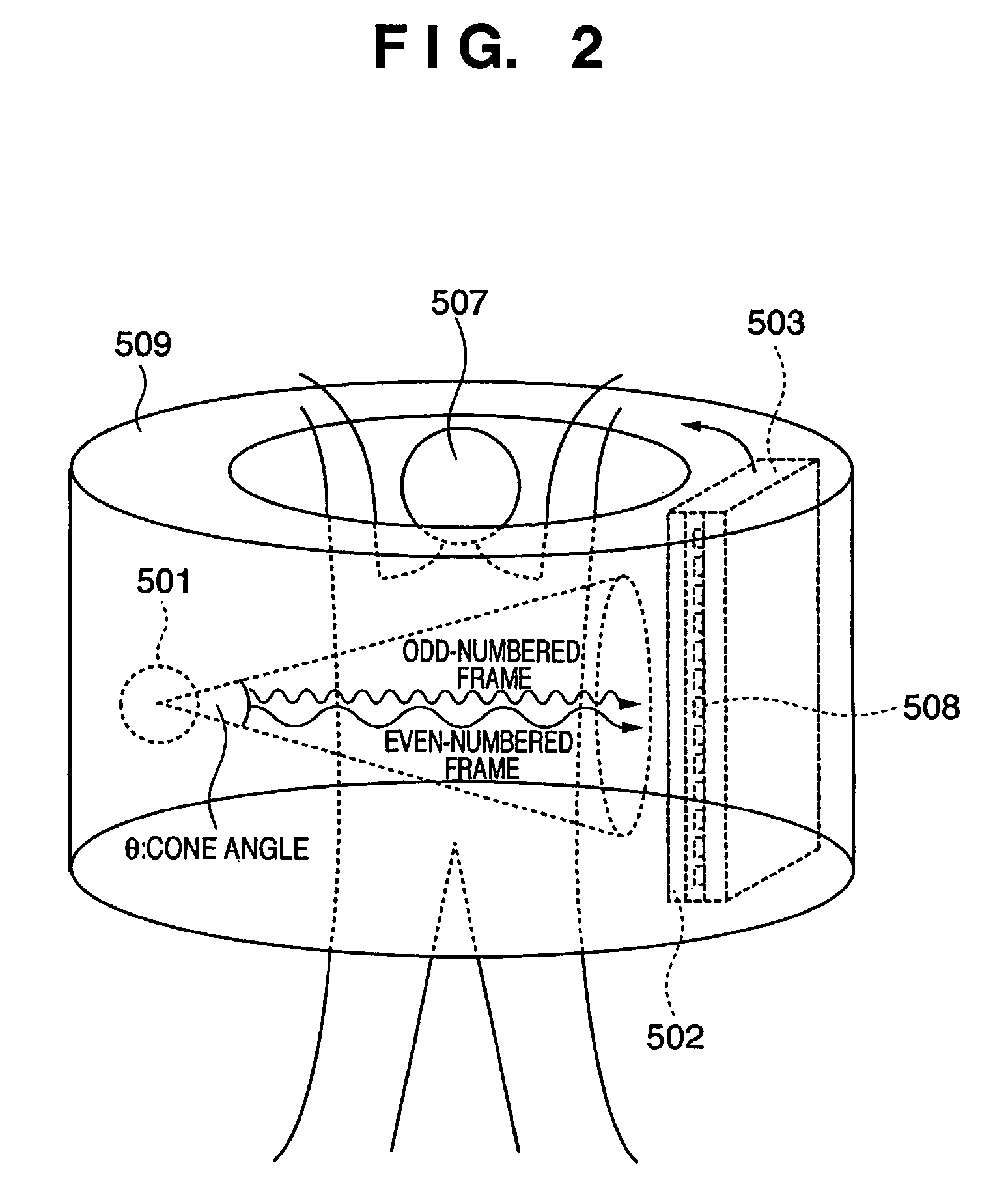Radiographic imaging apparatus, control method thereof, and radiographic imaging system
a control method and radiographic imaging technology, applied in the direction of tomography, material analysis using wave/particle radiation, instruments, etc., can solve the problems of high power consumption, long life of the x-ray tube, heavy burden on the patient who is fixed to restrict motion and let stand in a closed space called a gantry for a long time, etc., to increase the diagnostic efficiency and low contrast
- Summary
- Abstract
- Description
- Claims
- Application Information
AI Technical Summary
Benefits of technology
Problems solved by technology
Method used
Image
Examples
first embodiment
[0039]FIG. 1 is a view showing the schematic arrangement of an X-ray imaging apparatus according to the preferred first embodiment of the present invention.
[0040]An object 507 is irradiated with X-rays which are emitted from an X-ray tube 501 and have an exit angle θ. The object 507 is mainly a human (patient). The X-rays transmitted through the object 507 are converted into visible light by a phosphor 502. The visible light from the phosphor 502 is converted into an electrical signal by conversion elements 508. As a result, an X-ray image of the object 507 is obtained as an electrical signal.
[0041]An example of the material of the conversion elements 508 is amorphous silicon. The conversion elements 508 are formed on an insulating substrate 506 such as a glass substrate. The phosphor 502 to convert X-rays into visible light and the conversion elements 508 substantially adhere to each other by, e.g., bonding or the like so that an X-ray detection circuit 503 including the phosphor 5...
second embodiment
[0103]FIG. 11 is a view showing the schematic arrangement of an X-ray imaging apparatus according to the preferred second embodiment of the present invention.
[0104]An object 507 is irradiated with X-rays which are emitted from an X-ray tube 501 and have an exit angle θ. The object 507 is mainly a human (patient). The X-rays transmitted through the object 507 are converted into visible light by a phosphor 502. The visible light from the phosphor 502 is converted into an electrical signal by conversion elements 508. As a result, an X-ray image of the object 507 is obtained as an electrical signal.
[0105]An example of the material of the conversion elements 508 is amorphous silicon. The conversion elements 508 are formed as pixels on an insulating substrate 506. The phosphor 502 and conversion elements 508 substantially adhere to each other by, e.g., bonding or the like so that an X-ray detection circuit 503 including the phosphor 502 and conversion elements 508 is formed. The phosphor ...
third embodiment
[0112]FIG. 13 is a timing chart showing the operation of an X-ray imaging apparatus according to the preferred third embodiment of the present invention. The timing chart in FIG. 13 shows four signals: “move”, “X-rays”, “tube voltage” and “picture signal” in radiographing odd- and even-numbered frames. “Move” indicates the timing of rotation (displacement) of an object 507 which is arranged between an X-ray tube 501 and an X-ray detection circuit 503. As a characteristic feature of the third embodiment, the reading operation is executed in accordance with a sequence wherein movement is done in odd-numbered frame radiography but not in even-numbered frame radiography. Radiography is executed with one rotation for every two frames. More specifically, an imaging control unit 511 shown in FIG. 11 does not change the positional relationship between the object 507 and the X-ray tube 501 and X-ray detection circuit 503 in odd-numbered frame radiography for the (2m−1)th frame and even-numbe...
PUM
| Property | Measurement | Unit |
|---|---|---|
| size | aaaaa | aaaaa |
| size | aaaaa | aaaaa |
| rotation angle | aaaaa | aaaaa |
Abstract
Description
Claims
Application Information
 Login to View More
Login to View More - R&D
- Intellectual Property
- Life Sciences
- Materials
- Tech Scout
- Unparalleled Data Quality
- Higher Quality Content
- 60% Fewer Hallucinations
Browse by: Latest US Patents, China's latest patents, Technical Efficacy Thesaurus, Application Domain, Technology Topic, Popular Technical Reports.
© 2025 PatSnap. All rights reserved.Legal|Privacy policy|Modern Slavery Act Transparency Statement|Sitemap|About US| Contact US: help@patsnap.com



